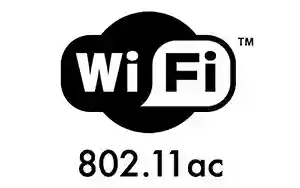 Currently there is a lot of noise in the press regarding the new so called Gigabit Wi-Fi 802.11 ac standard. Of course the upgrade to 802.11 ac has some technical advantages, but even though, is now the right time to upgrade your enterprise network or is the new technology not yet finalized?
Currently there is a lot of noise in the press regarding the new so called Gigabit Wi-Fi 802.11 ac standard. Of course the upgrade to 802.11 ac has some technical advantages, but even though, is now the right time to upgrade your enterprise network or is the new technology not yet finalized?
It is important to consider for this analysis company requirements, as it is the market to which Teldat products are focused towards. Whilst within a home/SoHo environment, one Access Point has to serve a small number of WLAN clients with excellent performance, in a typical enterprise application we will have a large number of Access Points to cover a large office area and the main need will be to serve a large number of roaming clients, unevenly distributed. This will be sufficient with a good average WI-FI performance.
Wi-Fi 802.11ac operates exclusively on the 5GHz network, but is backward compatible with the existing clients. Current chipsets promise data rates of up to 1.3 Gbit / s – this is the physical rate, whilst the net rate is about 50% lower. The performance gain is achieved mainly by two improvements. Firstly, instead of 20MHz channel bandwidth, 11 ac requires at least 80 MHz, and there is even a variant which requires 160 MHz of bandwidth. However, this very high bandwidth requirement complicates an overlap-free (and thus interference-free) channel planning within companies. Depending on the channel bandwidth, only one or two channels in the Indoor-frequencies bands are used. So especially due to the high channel bandwidth, it may well be that bottlenecks in enterprise networks are generated, as they tend to have many access points and many clients in each channel. Thereby less wireless clients can connect simultaneously to the Wi-Fi network. This could cause a huge problem for business networks. The second improvement is that in addition to the 64-level quadrature modulation (64-QAM) it will now be adding a 256-level quadrature modulation (256-QAM). However, the use of 256-QAM requires a very good signal-to-noise ratio, which is only achieved at short distances to the access point. If the signal-to-noise ratio is not adequate, the devices switch back to 64-QAM.
An important point is the economic aspect related to Wi-Fi 802.11 ac
A possible migration to .11 ac should analyse the network infrastructure, as well as the costs involved in the planning. The current .11 ac devices are very power hungry and require a higher PoE power class (802.3at) – hence new switches will need to be purchased. In addition, the first .11 ac products are considerably more expensive than the best .11 n devices.
The new .11 ac standard comes with another technical improvement which is very important in raising the performance for many clients, especially enterprise networks. This feature is called MU-MIMO (Multi-User MIMO). Without MU-Mimo all 1×1 Mimo clients will always share the first stream or antenna of an Access Point (E.g. when connecting three 1×1 Mimo clients to a 3×3 MIMO Access Point). For MU-MIMO however, each client can receive its own stream from the access point. That means the system has a three times higher throughput or each Access Point can serve three times more clients. In any case a significant improvement.
MU-MIMO is therefore particularly interesting for applications in enterprises, as it is in this case less concerned with providing a single client with the highest possible data throughput, and is more concerned about connecting as many users with the best possible performance. The MU-MIMO is not yet in the current available chipsets – this is the most significant reason why Wi-Fi 802.11 ac is still not quite ready for business use.
The R&D department at Teldat works closely together with semiconductor manufacturers and the latest technologies available, to launch in the next months a dual-radio enterprise access point that combines the advantages of 2.4 GHz .11 n technology and the new .11 ac technology together. This next-generation .11 ac will be both more efficient with energy consumption, as well as in the use of mobile .11 ac terminals.


























